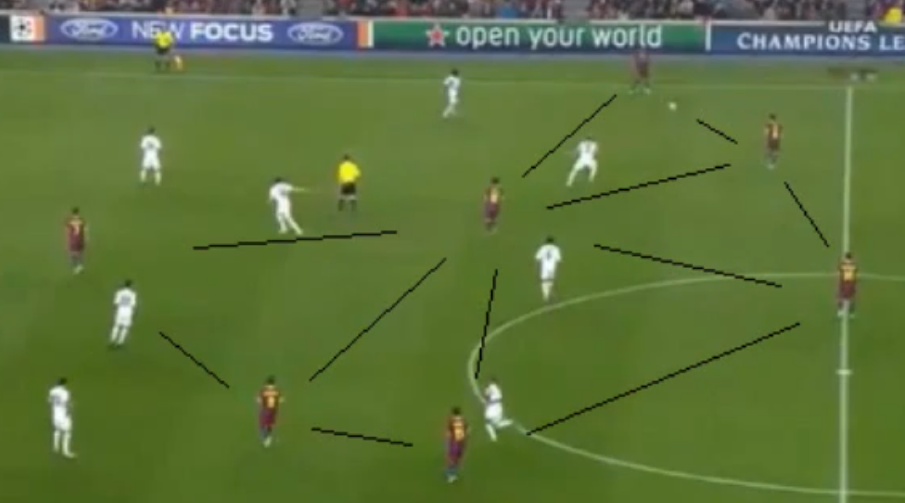A network analysis of the 2010 FIFA world cup champion team play
https://link.springer.com/article/10.1007/s11424-013-2291-2
Soccer is undeniably the most popular sport in the world. Every four years the biggest sporting event in soccer is the FIFA World Cup. In 2010, the final of the world cup had an audience of approximately 531 million people around the world. This interesting research paper analyzes the network of passes among the eventual champion, Spain, in the 2010 world cup. The Spanish team was used as a network, with the players serving as nodes while the successful passes between the players were implemented as edges between the nodes. Some prior studies on soccer analysis have shown that relative strength of passing triangles in a network can accurately depict a team’s performance and also an individual’s performance. It is worth noting, that Spain’s style of playing at the time called “Tiki Taka” is fundamentally reliant on the use of triangles and passing lanes.

Barcelona using passing triangles in their Tiki Taka playing style
In addition, the Tiki Taka is heavily possession based in both defense and attack with the use of those triangles. In the paper, Spain’s last three games were analyzed based on the number of passes per minute, number of consecutive passes, and the clustering coefficient(which is described as the extent to which players tend to cluster when passing the ball). In the quarterfinal of the tournament, Spain had a less than average passing per minute than usual, however, this can also be attributed to Paraguay’s constant pressing which disrupted Spain’s usually dominant passing network. As the game progressed, Spain was able to improve this passing network as they were able to successfully within their triangles more efficiently. In the next match, Spain was able to have an average passing more than double than what they achieved in the Paraguay game. As a result of this higher passing, they were able to have a more balanced network. The authors imply that a higher rate of consecutive passes will correlate to a higher chance of scoring a goal. Spain had sequences of up to 24 passes before they were able to score a goal that game.
Overall, Spain had the highest passing completion in the entire tournament with 87%. The team’s outstanding ability to form triangles and pass efficiently proved to be prevalent factor in their win in the world cup. I found this paper to be a very interesting piece since I watched that Spanish side dominate international soccer from the years 2007-2013. I remember being amazed at how well the team structured themselves very well in defense and offense, using sequences of intricate passes in both situations. Although not explicitly mentioned, it should be noted that the strength of the ties between each node can be attributed to bond several of the Spanish players had since they played together in their youth for many years. In addition, I enjoyed reading the paper because of the way it tied in the sport I cherish the most and some of the topics we have covered in class thus far.
